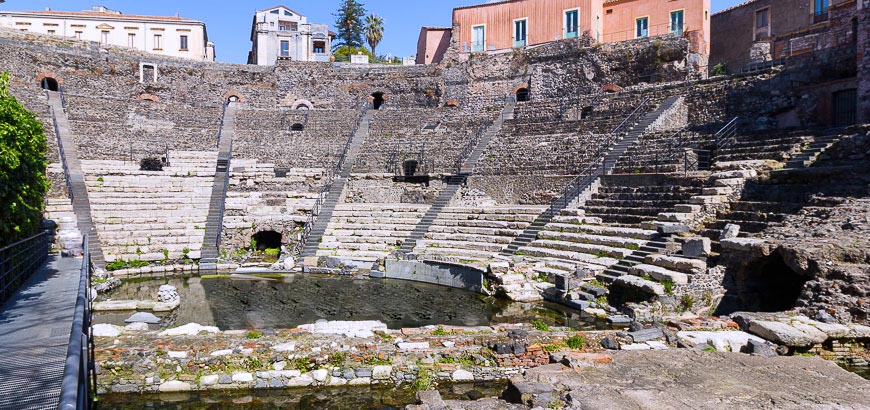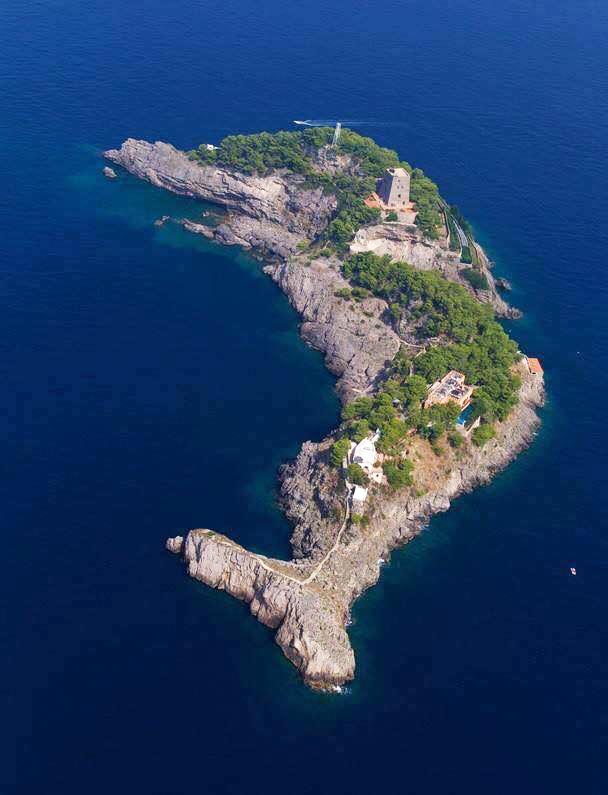Catania
After delighting in the luxury and culture of Taormina, the Publisher’s Tour headed south down the eastern coast of Sicily to Catania, the island’s second largest city.
The ancient city of Catania is well-known for its history and culture. It has also been a commercial center for over 2,000 years and is a vital part of the Mediterranean’s transport network. It is a major port of call for export and is the main industrial, logistical and commercial center of Sicily. Its airport, Catania-Fontanarossa Airport is the largest in southern Italy. Yet beyond the briefcases and business suits, Catania is remarkably picturesque. Located on the east coast facing the Ionian Sea, it is situated at the foot of Mount Etna. The volcano has been both a blessing and a curse during the city’s long history. Earthquakes destroyed Catania in 1169 and 1693 and eruptions have destroyed parts of the city throughout its history, yet the volcanic ashes yield fertile soil, especially suited for agriculture.
Catania was founded in the 8th century BC and in 263 BC, during the early years of the First Punic War, it was one of the first cities of Sicily to submit to the Roman Republic. It became highly prosperous under Roman rule, especially as a port. It was sacked by the Vandals and later by the Ostrogoths during the fifth century, but was reconquered in 535 by the Eastern Roman Empire and remained under its rule until the ninth century. In 1072, it fell to the Normans of Roger I of Sicily. Castello Ursino is a medieval castle that is a remnant of the 11th century Norman Conquest. The impressive structure also houses a museum that has an extensive archeological collection.
By the 15th century, Catania was under Aragonese rule and in 1434, King Alfonso V founded the Siciliae Studium Generale, the oldest university on the island. The university quarter to this day remains a vibrant part of the city, filled with bookstores, cafes, restaurants and the historical palaces that make up the university. Throughout the Renaissance, Catania was one of Italy’s most important cultural, artistic and political centers.
Although the Publisher’s Tour visited Catania in October, its largest religious celebration will be taking place next week, from February 3rd to the 5th, honoring its beloved patroness, Saint Agatha. The main cathedral of Sant’Agata displays the Baroque gold bust and relics of the saint which are featured at the celebrations. The Church of Sant’Agata al Carcere is built upon the original prison cell where Agata was imprisoned.
There are many examples of exquisite ecclesiastical works of art and objects in a separate museum a few steps from the Cathedral. The Museo Diocesano di Catania on the same square as the Duomo holds many precious church items associated with Saint Agata. The terraces of the museum offer a magnificent view of the main street looking out towards Mount Etna. Directly over the via Etnea and Porta Uzeda, there is the beautiful city entrance door built in 1695 after a major earthquake in 1693, which destroyed many towns and cities in southeastern Sicily.
Directly in front of the cathedral is the Fontana dell’Elefante in Piazza Duomo. The Roman statue of an elephant was carved from basalt and has long been a symbol of the city. Although history has not recorded the origin, it may have been placed in the piazza as a reminder of the Roman Republic’s reach and its strength following its defeat of the Carthaginians during the second Punic War (212 to 202 BC). During that war, Hannibal famously invaded Italy through the Alps using war elephants and the Carthaginians also laid siege to nearby Siracusa.
A short walk from the cathedral is the monastery of San Nicolò l’Arena, a jewel of the late-Sicilian Baroque style. It is also one of the most massive Benedictine buildings in the world. Constructed during the 16th century, the building is a UNESCO World Heritage Site and is home to the Department of Humanities of the University of Catania. An amalgamation of many styles, the complex is a series of structures including a Marble Cloister, the Red Hall and the Basilica of San Nicolo.
Palazzo Biscari is perhaps the city’s most important palace and is an extraordinary example of Catanese Baroque architecture. The interior décor is in Rococo style with spectacular decorations, stylish furniture and crystal chandeliers which make it feel like the Palace of Versailles.
As is so common in Italy, there is an astounding amount of layering of different parts of history. It was the 17th century earthquake which allowed the Le Terme Achilliane (Baths of Achilliane) to resurface, one of the most important remaining structures from the Roman Empire in Catania. The other precious piece of ancient Roman Catania is the Teatro Romano, an open-air amphitheatre, dating from 300 BC. It is exceptionally well-preserved in the classical style and had a capacity for 7,000 spectators.
Teatro Massimo Bellini is an opulent Baroque theater dedicated to the Catanese opera composer Vincenzo Bellini and is one of the most beautiful pieces of architecture in a city that includes countless Baroque treasures. One of the signature dishes of the city is Pasta alla Norma named in honor of Bellini’s famous opera. As one would expect of a port city, Catania has fantastic seafood with favorites including pasta made with nero di seppia (squid ink), pesce spada (swordfish) and sarde beccafico (sardine wraps).
At just under 11,000 feet high, Mount Etna dominates the view from the city. Various roads lead up to the levels of this active volcano which offer extraordinary views among the trees, villas and restaurants. Higher up, lava flows have sculpted a unique and alien landscape. Due to its height, there are even two ski resorts on the mountain, one on the north side and one on the south.





